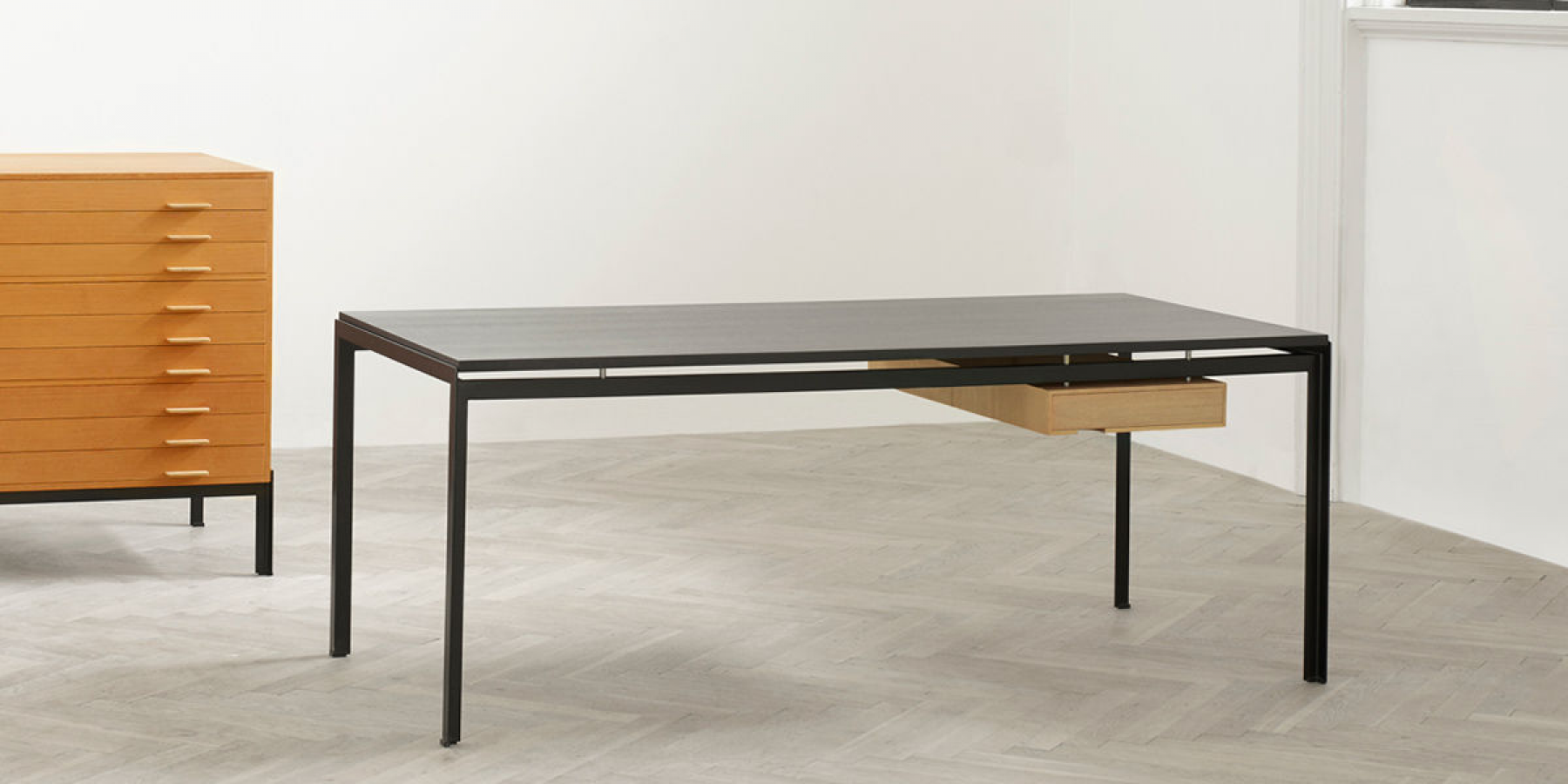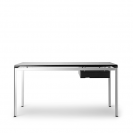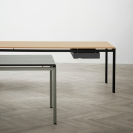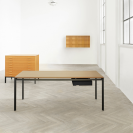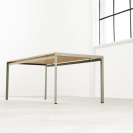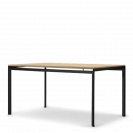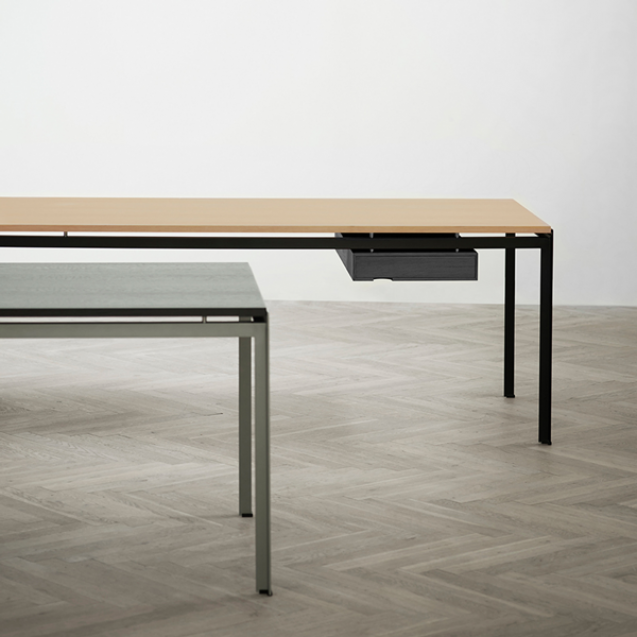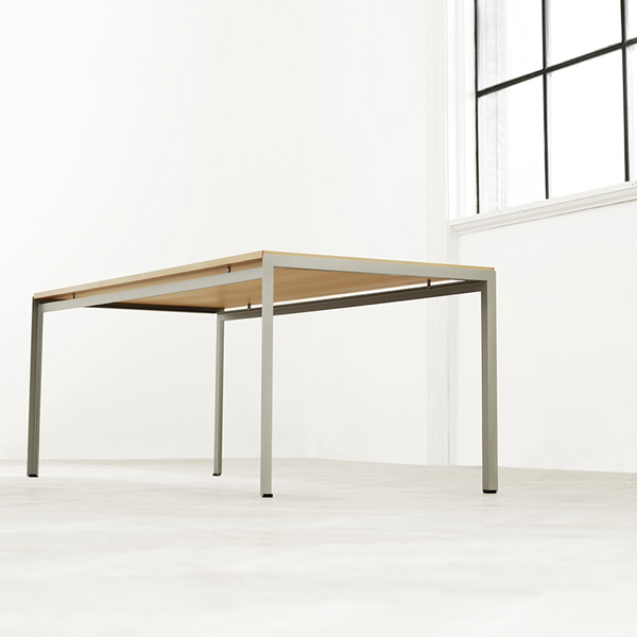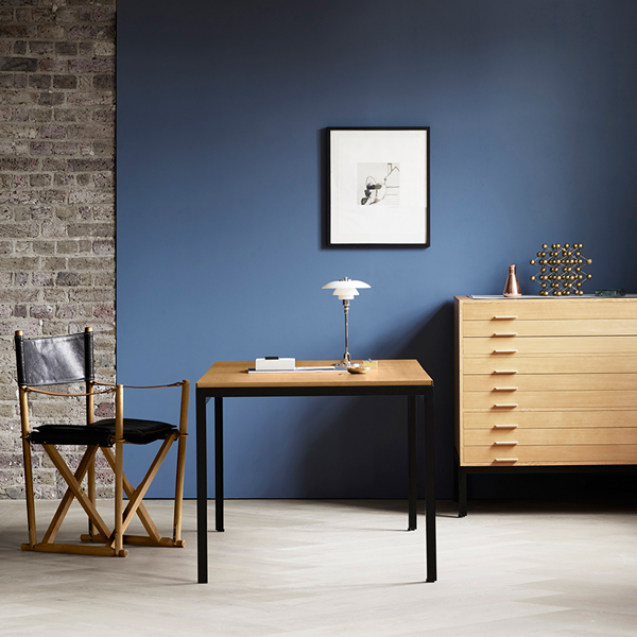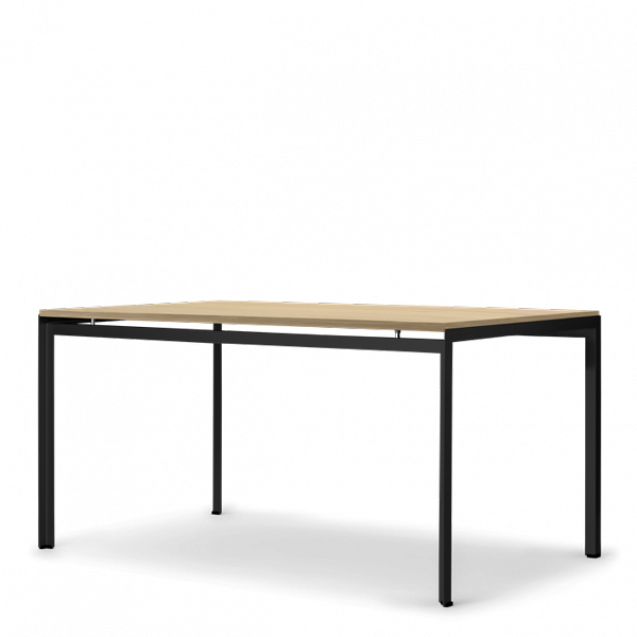PK52 & PK52A
Poul Kjærholm - the Danish pioneer of modernism - designed a
small furniture series for the Academy of Fine Arts in 1955, where he had just
begun working as a lecturer. Kjærholm designed a Professor Desk (PK52) and a
Student Desk (PK52A), made of wood and steel.
Both Desks has a light, simple design, and clearly demonstrates
the exquisite interplay between materials which is typical of Kjærholm's
designs.
Kjærholm elegantly combined a lacquered steel frame with a
veneered wood table top, thereby refining some of the design elements which
would later characterize his furniture.
The Student Desk, serving as a smaller version of the Professor Desk, is
available with Oregon pine or oak veneer tabletops with various surfaces, and
with a reversible gray and black laminate tabletop. The frame is produced
in black or grey lacquered steel. Drawer is optional.
| About Designer | |
|---|---|
Poul Kjærholm |
Through his important work as an architect and teacher, Poul
Kjærholm (1929-1980) is regarded a central figure in international furniture
design. Kjærholm combined his modern form language with an uncompromising
approach to materials and quality, strongly rooted in the Danish tradition of
craftsmanship. At the same time, he was deeply inspired by the German Bauhaus
School and the Dutch De Stijl movement, represented by painter Piet Mondrian,
among others. Designers Gerrit Rietveld, Mies van der Rohe and Charles Eames
also greatly influenced Kjærholm's work. Not all of Kjærholm's inspiration, however, was drawn from
abroad. He was also deeply influenced by Danish furniture designer Kaare Klint,
who helped found the Department of Furniture Design at the Royal Danish Academy
of Fine Arts and, with his ideals of simple form and outstanding craftsmanship,
is viewed as the father of modern Danish design. Klint's vision of simple and
clear expression had a major impact on Kjærholm who, like Klint, was
uncompromising in his work with proportions and materials as well as in his
craftsmanship. Kjærholm made a name for himself primarily with his modern
steel, leather and glass furniture. After completing his training as a
cabinetmaker in Hjørring, Denmark in 1949, he went on to study furniture design
at the Danish School of Arts and Crafts (now the Royal Danish Academy of Fine
Arts, School of Design) in Copenhagen, graduating in 1952 and returning again
to teach shortly afterwards. He became a lecturer at the Royal Danish Academy
of Fine Arts in 1955, and was appointed as professor in 1976, succeeding Ole
Wanscher. Kjærholm remained at the Academy until his death in 1980. Function and clarity became the hallmarks of Kjærholm's entire
career as both an educator and a furniture designer. He did not see himself as
someone who designed objects, but rather as someone who created spaces. He
often designed furniture with particular places in mind, doing so with a rigor
and level of detail that continues to arouse admiration. In his own words,
Kjærholm strived to express each material's own language - whether he was
working with steel, leather, glass, wood or wicker. Kjærholm was an idealist in his field. Throughout his career, he
avoided easy solutions and refused to be influenced by shifting fads. He was
driven by a desire to realize each material's intrinsic nature and create
harmony between form and material - and often felt there was only one solution
to a given problem. He was a demanding teacher guided by perfectionism and
discipline, his idealistic approach to design also manifesting itself among his
students.
Kjærholm's furniture is represented in a number of international
museums, including the Museum of Modern Art in New York. His work earned him
numerous awards, including the Lunning Award in 1958, the Eckersberg's Medal in
1960, and multiple ID Awards. |
